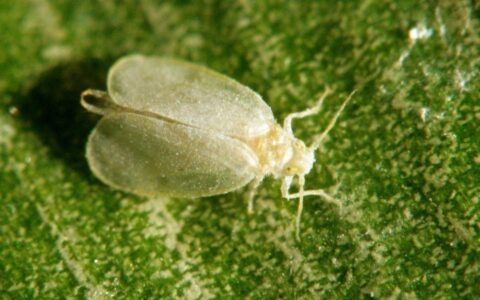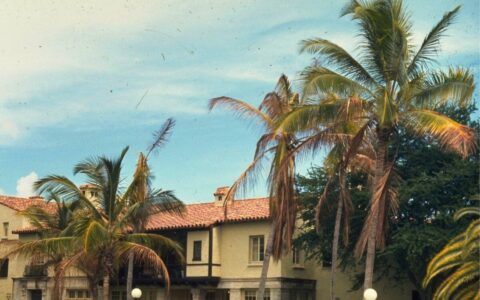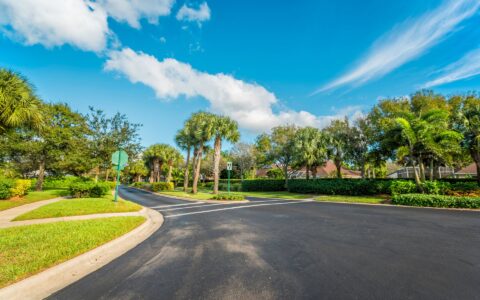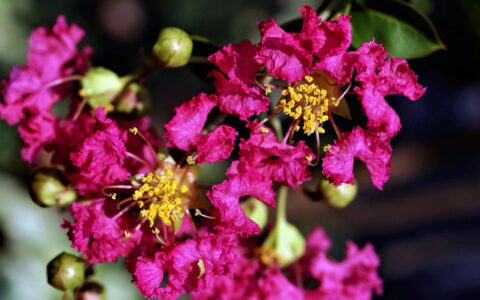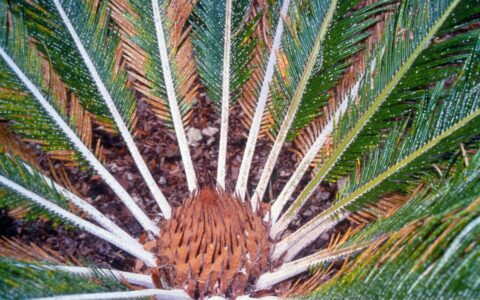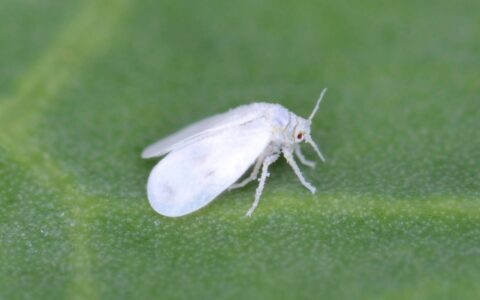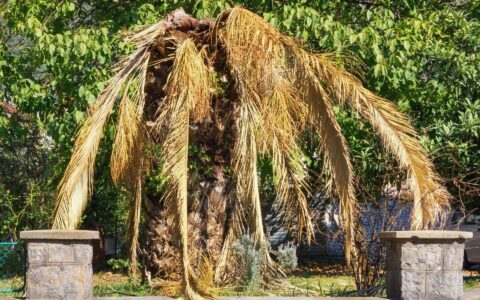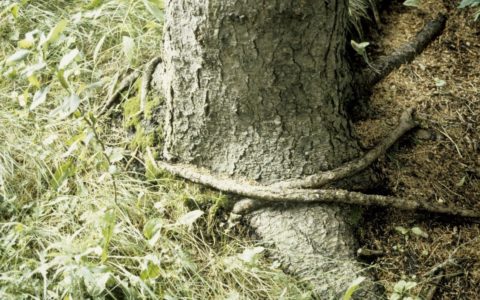In South Florida’s vibrant landscapes, trees like palms, avocados, mangos, oaks, and citrus embellish our surroundings and sustain the local ecosystem. However, the beauty and health of these trees are often marred by leaf spot diseases, which manifest as discolored spots on their foliage. These diseases, while sometimes merely cosmetic, can signal deeper health issues that threaten the longevity of our cherished trees.
Unravel the mysteries of leaf spot diseases affecting South Florida’s most beloved trees. Explore the causes of leaf spots so you can distinguish when it’s time for home remedies and when to seek the expertise of professionals like Sherlock Tree Company, ensuring your trees thrive in Florida’s unique climate.
Key Takeaways
- Leaf spot diseases in South Florida can significantly affect the health and aesthetics of popular trees, including palms, avocados, mangos, citrus, and live oaks.
- Fungal infections, nutritional deficiencies, and environmental stress are among the leading causes of leaf spots across various tree species.
- Early detection and accurate diagnosis are critical for effectively managing and treating leaf spot diseases.
- Professional expertise is invaluable for complex diagnoses, effective treatment plans, and preventive care strategies.
Causes of Common Leaf Spot Diseases in South Florida Trees
Leaf spot diseases are a common concern among South Florida tree owners, impacting the trees’ aesthetics and health. Learning to identify the most likely cause of spotted leaves on our region’s most cherished trees, such as palms, avocados, mangos, citrus, and oaks, is the first step in treating and preventing leaf spot diseases.
Causes of Spots on Palm Fronds
Fungal Infections
Palm trees may exhibit leaf spots in various colors, including brown, black, and sometimes yellow, often encircled by a halo. These symptoms are usually caused by fungal infections such as leaf spots. Identifying the specific pathogen requires examining the shape, color, and pattern of the spots alongside the tree’s overall health.
Nutritional Deficiencies
Palms lacking essential nutrients like potassium, magnesium, or manganese may show similar symptoms as fungal leaf spot diseases, including yellowing or browning spots on their fronds.
Environmental Stress
Overwatering, poor drainage, and excessive sun exposure can stress palm trees, making their leaves more susceptible to spotting. Stress weakens the plant’s natural defenses, allowing pathogens to take hold more easily.
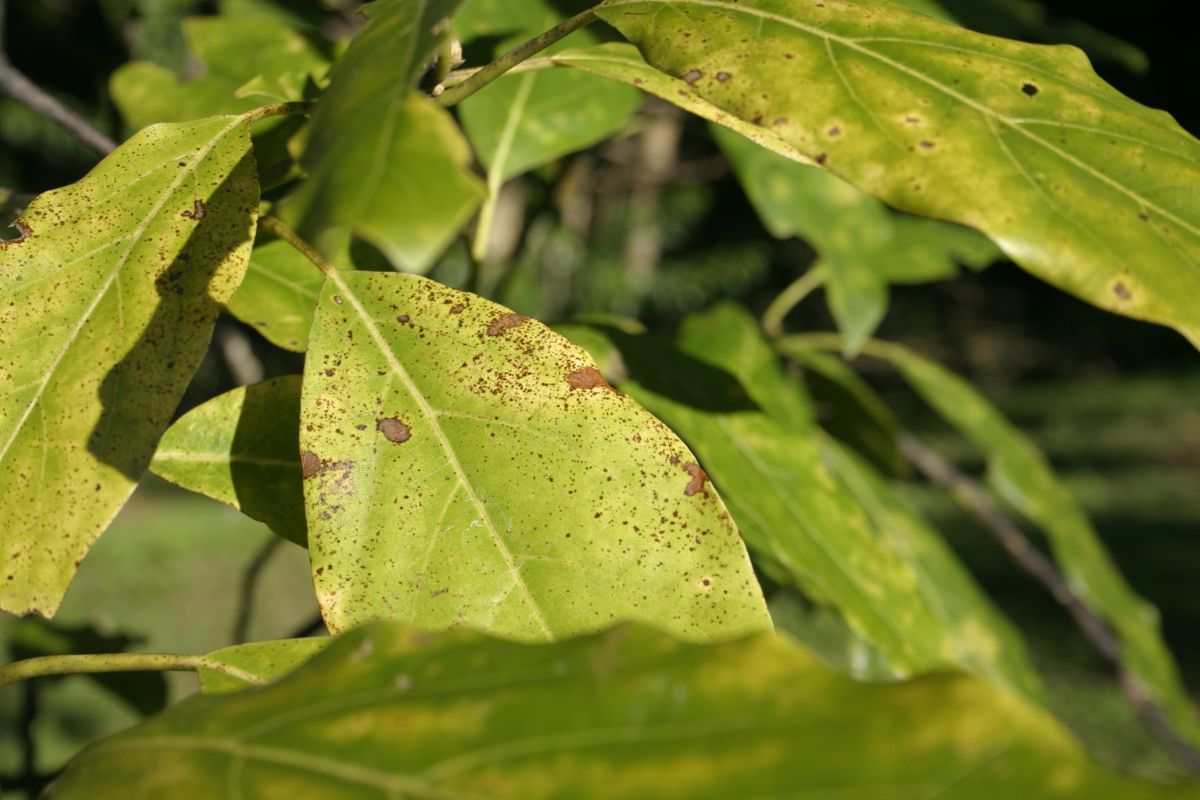
Avocado Leaves Marred by Fungal Spots – A Common Sight in Humid Gardens.
Spots on Avocado Tree Leaves: Common Causes
Anthracnose on Avocado Trees
This fungal disease is a common cause of leaf spots in avocados, leading to circular brown spots that can coalesce and cause significant leaf drops. The spots often start as small, discolored areas that gradually expand, becoming sunken and dark as the infection progresses. Beyond just the leaves, this fungus can also affect the fruit, leading to post-harvest losses.
Anthracnose is particularly prevalent in wet and humid conditions, where it can spread rapidly through splashing water from rain or irrigation.
Cercospora Spot
Caused by a fungus, this disease results in small, dark spots on leaves which may expand and merge, affecting photosynthesis and overall tree health. Initially appearing as discrete, light brown to gray spots, they gradually darken and may be surrounded by a yellow halo, signaling the disease’s progression. The affected leaves can become yellow and fall off prematurely, potentially leading to reduced vigor and growth due to the loss of photosynthetic capacity.
Cercospora leaf spot thrives in high humidity and warm temperatures, common in South Florida’s climate.
Sunburn on Avocado Leaves
In addition to pathogens, avocado leaves can develop spots from sunburn, especially in young trees or newly exposed leaves after pruning, which appear as bleached or brown areas on the leaves.
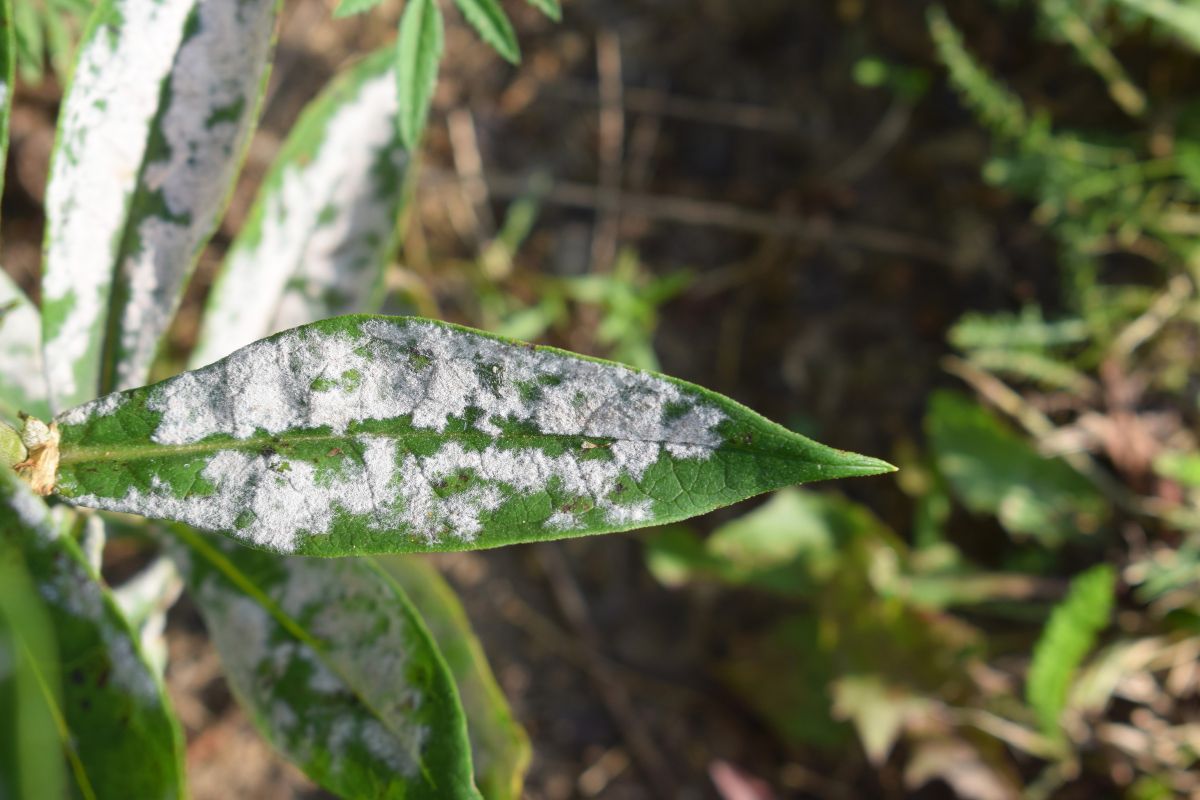
Mango Leaves Battling the Clutches of Powdery Mildew.
Common Causes of Spots on Mango Tree Leaves
Powdery Mildew
This fungal disease causes a white, powdery coating on leaves, leading to spots that can cover large areas and significantly affect the tree’s vigor and fruit production.
Unlike many fungal diseases that thrive in wet conditions, powdery mildew can develop and spread in high humidity and dry weather, making it a persistent issue throughout various climates.
The disease initially appears as small, white, powdery spots that can quickly grow to cover the entire leaf surface and, in severe cases, spread to the stems and fruit, stunting growth and reducing yield.
Anthracnose of Mango Trees
Like avocados, mangoes are also susceptible to anthracnose, causing dark, water-soaked spots on leaves, stems, and fruit, leading to premature leaf drop.
Bacterial Black Spot
Although less common, this bacterial disease can cause raised, black spots on mango leaves, often with a yellow halo, leading to defoliation and reduced yield.
Diagnosing Leaf Spots on Citrus Trees
Citrus Canker
Yellow spots on citrus leaves can be caused by various issues, including nutritional deficiencies, pest infestations, or diseases like citrus canker, which causes raised lesions or spots on leaves, stems, and fruit.
Greasy Spot
This fungal infection leads to yellow-brownish spots on the undersides of leaves, eventually turning greasy and black, which can cause significant leaf drop.
The disease is most commonly observed in humid climates where conditions are ideal for the fungus to thrive and proliferate. Spores from the fungus germinate on the leaf surface, leading to a characteristic greasy appearance as the infection matures.
If left unmanaged, greasy spots can severely reduce the tree’s photosynthetic capacity, weakening it and potentially affecting fruit yield and quality.
Nutritional Deficiencies
Like palms, citrus trees showing spots on their leaves may suffer from a lack of essential nutrients, particularly zinc or manganese, leading to symptoms that mimic fungal or bacterial diseases.
Causes of Leaf Spots on Oak Trees in South Florida
Anthracnose on Oak Trees
Oak trees are also vulnerable to anthracnose, characterized by brown or black spots and blotches, often following the veins of the leaves. Severe infections can lead to premature leaf drop.
Oak Leaf Blister
In Florida, Oak Leaf Blister most commonly occurs on live oaks, water oaks, laurel oaks, and southern red oaks.
This fungal disease causes raised, blister-like spots on the upper surface of oak leaves, which can weaken the tree over time. Initially, the blisters look like small, yellowish-green spots. As the disease progresses, the blisters get bigger and can turn gray or brown. Severely infected trees will drop their leaves early.
Bacterial Leaf Scorch on Oaks
While not a typical “spot” disease, this bacterial infection can cause browning and scorching of leaf margins that may be mistaken for leaf spot diseases.
This tree disease is spread by insects, particularly through the feeding activities of sap-consuming insects such as leafhoppers and treehoppers, which act as vectors for the disease.
Bacterial Leaf Scorch (BLS) affects the tree’s vascular system, restricting water flow and causing symptoms akin to drought stress. Over time, this can lead to a significant decline in tree health, resulting in leaf wilting, branch dieback, and in severe cases, the tree’s death.
When Leaf Spots on Trees Require Professional Treatment
While many gardeners feel comfortable tackling a range of gardening challenges, there are certain situations where the expertise of a tree care professional is invaluable. Recognizing when to call in the experts can save you time and ensure the health of your trees in the long run. Key scenarios where seeking professional assistance from a company like Sherlock Tree Company is crucial for managing tree leaf spots include:
- Persistent or Widespread Disease: If leaf spot diseases continue to spread or persist despite your best efforts, it’s time to call a professional. Experts can provide accurate diagnoses and advanced treatment options that might not be available to the general public.
- Valuable or Sentimental Trees: Consulting a professional can prevent irreversible damage to trees of significant monetary or sentimental value. Specialists in tree care have the knowledge and tools to give your prized trees the best chance at recovery.
- Complex Diagnoses: Some leaf spot diseases can be tricky to diagnose, requiring specialized knowledge or laboratory tests (such as Bacterial Leaf Scorch) to identify the pathogen accurately. Professionals can take the guesswork out of the equation, ensuring the treatment plan is targeted and effective.
- Chemical Treatments are Needed: If chemical intervention is necessary, professionals can apply treatments safely and effectively, adhering to environmental regulations and personal safety standards. They have access to commercial-grade products and equipment that ensure the best outcomes.
- Preventive Care and Maintenance: Sometimes, the best approach to managing leaf spot diseases is preventive. A professional can develop a comprehensive care plan tailored to your specific landscape, considering local conditions, tree species, and potential threats.
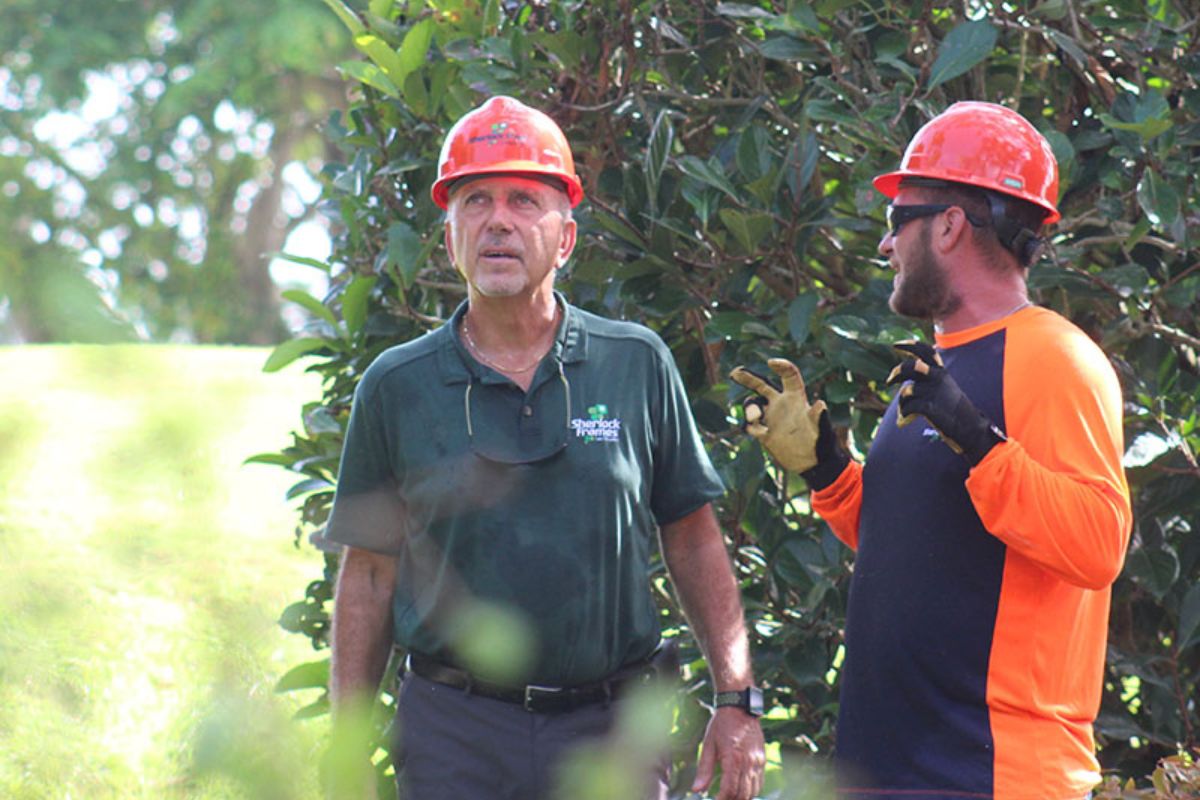
Expertise at Work: Sherlock Tree Company’s Dedicated Care.
FAQs About Leaf Spots on South Florida Trees
Q: Can leaf spot diseases affect the fruit production of my trees?
A: Yes, leaf spot diseases can impact fruit production by reducing the photosynthetic area of leaves, stressing the tree, and in severe cases, causing premature fruit drop or deformed fruits.
Q: Can nutrient deficiencies mimic the symptoms of leaf spot diseases?
A: Yes, nutrient deficiencies can sometimes cause symptoms like leaf spot diseases, such as yellowing or browning of leaves, making accurate diagnosis important for effective treatment.
Q: Are leaf spot diseases more prevalent in certain weather conditions?
A: Leaf spot diseases tend to be more prevalent in wet, humid conditions, as these environments are conducive to the growth and spread of fungi and bacteria responsible for the diseases.
Q: How can I tell if leaf spots are caused by pests or diseases?
A: Leaf spots caused by pests sometimes have visible signs of the pest, such as webs, insects, or eggs, whereas disease-caused spots are usually accompanied by a pattern of spread consistent with fungal or bacterial growth. A professional can help with this diagnosis.
Q: Can leaf spot diseases be completely eradicated from a tree?
A: While some leaf spot diseases can be effectively managed or controlled, complete eradication may not be possible for all diseases, requiring ongoing management strategies.
Leaf Spots Ruining Your Trees? Call Sherlock Tree!
The beauty and health of South Florida’s trees are constantly threatened by leaf spot diseases. Recognizing the signs of these diseases, understanding the treatment options, and taking preventive measures are critical to ensuring your trees remain a vibrant part of your landscape. However, the complexities of disease management often require a nuanced approach, combining diligent care with professional expertise.
Sherlock Tree Company stands ready to provide that expertise, offering a range of tree health services from diagnosis to treatment and preventive care. With a deep understanding of South Florida’s unique tree care challenges, we can handle even the most complex tree health issues.
At the first sign of trouble, or even as a preventive measure, don’t hesitate to call Sherlock Tree Company at 954-788-4000. Together, we can ensure that your trees continue to thrive, enhancing the beauty and value of your South Florida home for years to come.
Call Sherlock for quality tree services
Whether you're looking for specific tree care services, such as palm trimming, tree removal, or disease treatments, or would like one of our Arborists to examine your trees to identify any issues and recommend options, we're always here for you! Just give us a call at 954-788-4000 to set up an appointment.
SEE MORE ARTICLES
Looking for more?
We've got you covered with a monthly newsletter full of tips, resources, updates, how-to's, and other helpful information about trees and landscapes in South Florida!

